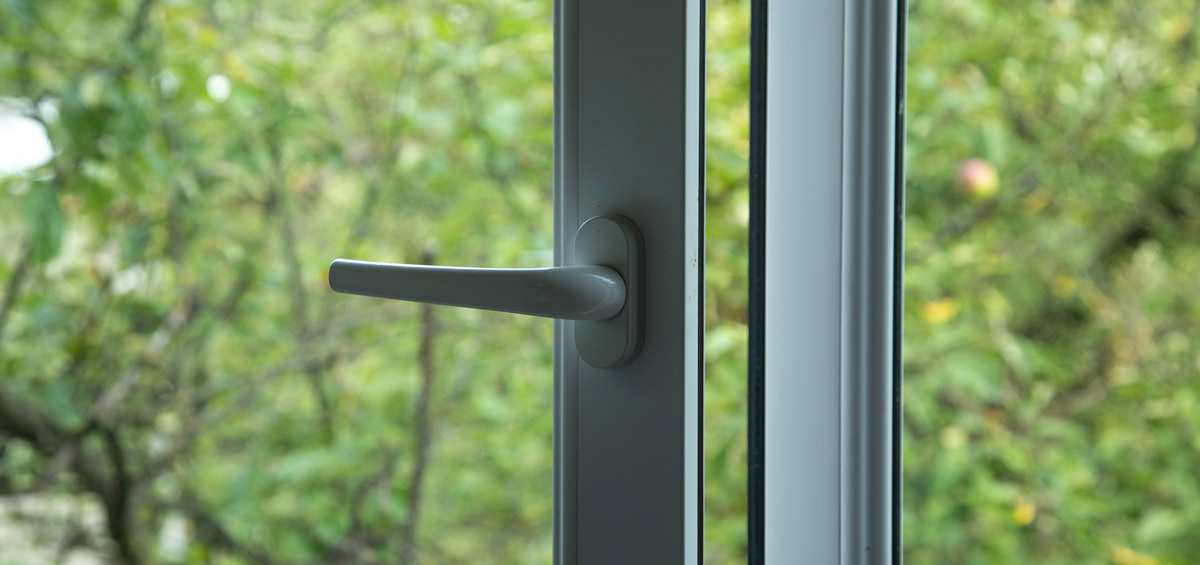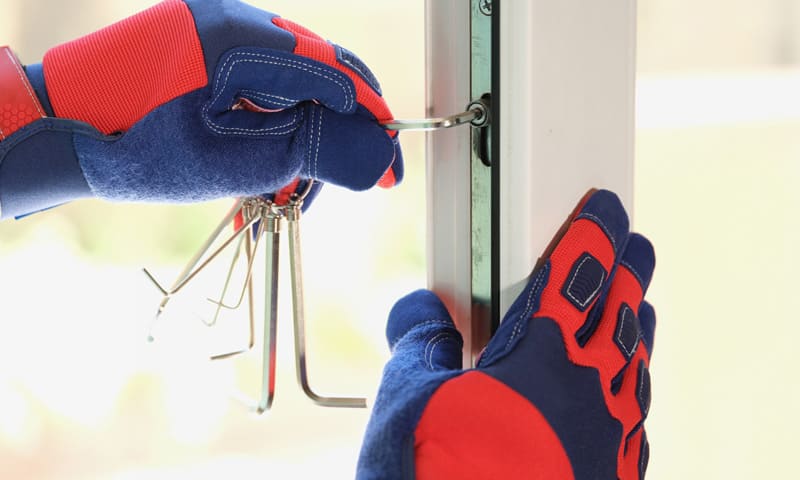Valuation Pro – Now with data back to 1985 + outlook for the next 12 months
View value development now
Everything homeowners need to know — Every first Thursday of the month.


Everything homeowners need to know — Every first Thursday of the month.

Regional craftsmen
Only certified companies
Quality guarantee

Nine times out of ten, burglars break in via a balcony door, a window or a patio door. Because they are not seen by anyone and do not want to encounter anyone, they shun great effort, noise and light. They usually prise open the window sashes or door leaves with whatever they have with them, for example a crowbar or screwdriver. This is child's play and takes less than 30 seconds if the window or door is not secured.
Burglars take the path of least resistance. They look for houses or flats with old balcony doors, windows and patio doors without window security. If you eliminate such weak points, you significantly reduce the risk of burglary with little effort, because many burglars quickly give up and move on. Burglary protection is particularly important for easily accessible windows and doors. This means for all basement windows and balcony doors, windows as well as patio doors on the ground floor and lower floors. The more vulnerable a window or door is, the more important window protection is.
The resistance classes are defined in the DIN standard EN 1627 ff and are based on resistance time and offender type. The scale for windows and doors ranges from RC 1 N to RC 6. The classes RC 1 N, RC 2 N and RC 2 cover around 85 percent of all types of burglary and are recommended for houses and flats.
With RC 4 (resistance time 10 minutes) you repel experienced burglars who bring a cordless drill, an axe, a hammer, a chisel, a chisel or a saw.

Burglars pry open windows at their weak points. With mushroom-headed pins, you make their work considerably more difficult. The locks are installed in the surrounding fittings and can be conveniently opened and closed again via the window handle. You can secure older windows, for example, with rod locks that are screwed onto the window frames - or replace them. Regardless of whether the windows are old or new, the handles should be lockable. Without a key, a burglar cannot open the window from the inside if he has broken the pane. If you leave a window open all the time to ventilate, you should protect it with a window grille that is firmly anchored in the masonry with solution-inhibiting special screws. The bars must be thick, the distances between the longitudinal bars must not be too large. Use welded cross-bracing to prevent the bars from being bent apart. Windows in the cellar or laundry room should be secured with a light well grille. If it is solidly screwed, you can always leave the window open and ventilate the cellar or laundry room continuously.
Seven sensible burglary protection measures for windows:
Secure shutters with locking bars and roller shutters with a lock to prevent them from rolling up. Plastic roller shutters protect less well against burglars than aluminium, wooden or steel roller shutters.
{{window}}
What applies to windows also applies to balcony doors and patio doors. Except for window grilles and light protection grilles. Older front doors or flat doors without additional security are relatively easy to pry open. As a rule, a simple screwdriver is sufficient as a lever. Newer doors are more stable and are increasingly secured with multi-point locks, for example at the top and bottom of the door. They multiply the resistance and significantly improve security. You can retrofit or double an older door with additional locks: The outside of the door is reinforced with a solid wooden plate so that the lever can only be applied between the wooden plate and the door frame, where it does no damage, but not between the door and the door frame. In addition, all locking bars should be solidly screwed and anchored and all locking cylinders should be protected with security long plates screwed from the inside so that burglars cannot break off or unscrew the cylinders.
Seven reasonable burglary protection measures for doors:
Burglars want to get in and out quickly. If a burglar only has to master one hurdle or two, he will try his luck. But as soon as he loses too much time, he gets restless and disappears. That is why it is worth combining several burglary protection measures and coordinating them sensibly. For this, you need a comprehensive security concept. Get consultation from the security experts of the police or from a window and door fitter in your area. And leave the installation to professionals. The strongest door lock is of little use if it has been installed incorrectly.
Security is the most common answer homeowners give when asked why they buy smart home solutions. There are also smart products for doors and windows. For example, contacts that detect whether a window or door is open or closed and warn you if this changes. Or glass breakage detectors that notify you or set off an alarm if a window is smashed. Smart Home products do not replace mechanical burglary protection measures such as locks or latches. Only the interaction of electronic and mechanical measures provides comprehensive protection.
Smart home solutions are useful to simulate presence and deter burglars, and to supplement mechanical burglary protection, for example with cameras and sensors. For example, you can protect the entrance to the house smartly: The door can only be opened with a chip (time-controlled) or fingerprint and via the intercom with camera, the camera is connected to a motion detector and records everything that moves. To ensure that electronic and mechanical burglary protection measures work together perfectly, you should get consultation from professionals.
Call the police immediately (117) if you come home and find a burglary. Do not under any circumstances go into all the rooms to look for your valuables or clean them up, otherwise you will destroy traces that could lead to the perpetrators and your property. Wait until the police arrive and make an overview of all missing valuables with the officers. Pictures, receipts or bills are helpful to identify your valuables in case the burglar is caught. The police will forward the report with all the documents to the public prosecutor's office.
{{insurancecheck}}
Report the burglary to the insurance company immediately if you have household contents insurance. Most insurance companies have an emergency number that can be reached around the clock. In principle, the burglar is liable for the damage. However, since only one in seven burglaries is solved and burglars are often insolvent, the household insurance will compensate the value of the stolen valuables - for cash and jewellery there are usually maximum amounts - and property damage. As soon as you have reported the burglary, you can commission a window and door fitter, glazier or carpenter to carry out the repair work.
Windows that are left ajar or tilted are considered open windows. Because the burglars do not have to use force, it is only simple theft. That is why cash, precious metals, credit cards, coins or securities are not insured and jewellery is only insured up to a certain amount.


